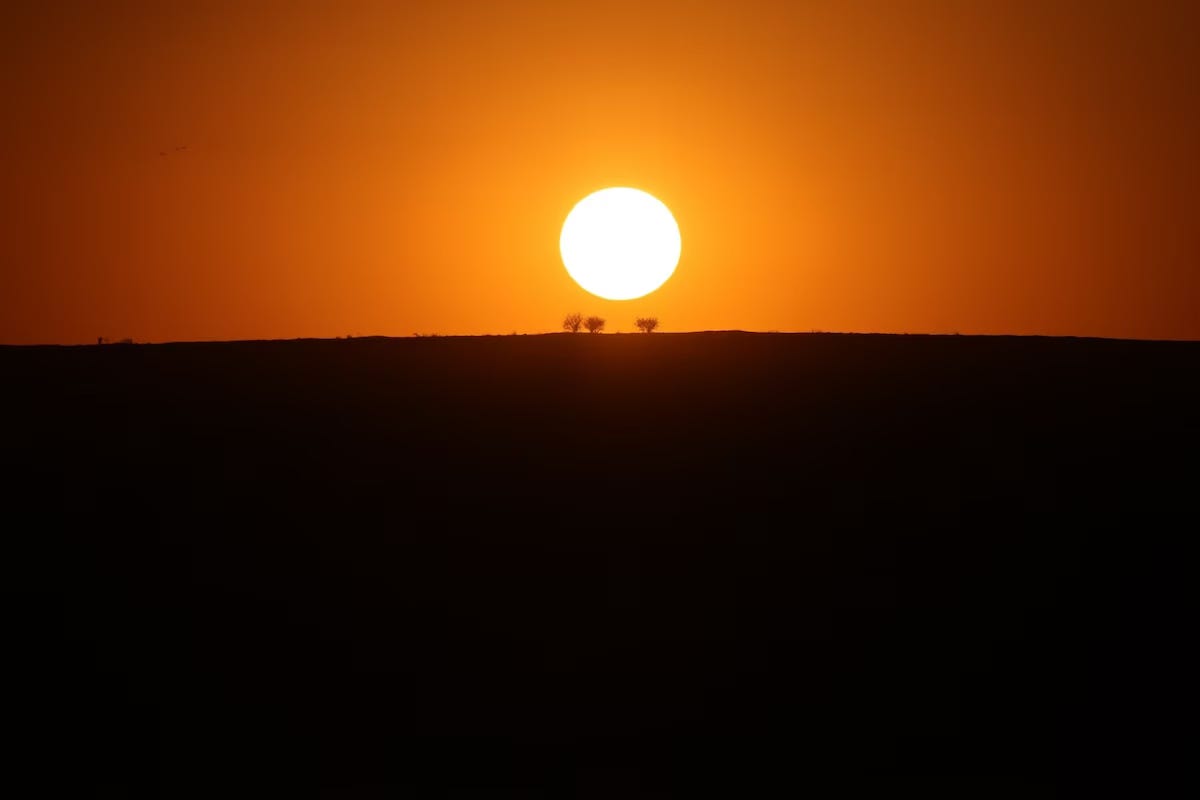This becomes the Sunday roundup of all the stories I collected but which did not make the cut as full-up posts during the week. As an offering, pretty much a ICYMI drill (in case you missed it).
1) Feeling good about the next generation
WAPO story (How TikTokers and Swifties became political power brokers in Guatemala)
Always good to start off with something optimistic about young people.
The gist concerning “one of the most improbable electoral victories since Barack Obama won the White House.”
In Guatemala, a country routinely ranked as one of the hemisphere’s most corrupt, idealistic young people using TikTok had boosted a reformer to the presidency.
Diplomats had called it a Cinderella story. A triumph of students and Swifties, in what analysts described as a virtual mafia state. Bernardo Arévalo, a 65-year-old academic and anti-corruption crusader, had won in a landslide.
Now, with the Right pushing back, there are fears of a slow-motion coup. Honestly, it’s like a sped-up version of the Obama Shock and the Trump Reaction, right down to the insurgents working off a tattered copy of a book describing Obama’s ascent.
Story is mostly about a young man who’s helped trigger this “jean jacket revolution” by enlisting prominent Tik Tok influencers to mobilize youth. That effort later segued into something similarly mobilizing with the nation’s significant indigenous population.
This progressive wave has a long road ahead of it, but you have to take heart at both the effort and the youth behind it.
2) Israel back at it
NYT story (Gaza Truce Extension Faltered Over Terms of Prisoner-Hostage Exchange)
Many of us naturally engaged in optimism regarding the pause in the fighting for the exchange of hostages/prisoners, but that was never going to segue into something bigger. The IDF pays a price by letting Hamas recover in the meantime, but, in the end, the goals remain the same: the wholesale diminishment of both the Strip as a geography capable of sustaining life and the sheer reduction of the Hamas threat capacity (at least coming out of Gaza).
Signpost up ahead from article: “The Israeli military signals ‘the next stage of the war’ by drawing zones for Gaza evacuations.”
The depopulation and geographic diminishment of Gaza continues. It will be brutal and yet I continue to understand Israel’s logic.
3) These are the drones we’re looking for
WAPO story (Pentagon plans a drone army to counter China’s market dominance)
Ukraine war continues to be THE proving ground for a future of warfare that is overwhelmingly waged by unmanned platforms that grow smaller, cheaper, and ever more disposable. Every raid is now a Doolittle Raid (look it up).
This revolution is less about the offense and more about the defense, in my mind. I don’t think you can conquer using robots and drones. I do think you can royally mess with a conquering force by throwing robots and drones at them.
So this is yet another example of area-denial capabilities versus area-capture capabilities.
As such, this sort of conflict will come down to industrial capacity — very much in line with most of history (to include the nuclear age, mind you). It won’t so much be a matter of preventing bad things from happening but making those responsible for those bad things pay through the nose.
This is totally the American Way of War: we outproduce you.
A lot of analysts right now fear we’re behind the curve on major platforms with rising China. The answer is simply to move that goal post and redefine the game with drones of all shapes, sizes, and capabilities.
4) We’re feeling hot! Hot! Hot!
WAPO story (This year will be Earth’s hottest in human history, report confirms)
Not much to say there. The evidence mounts.
5) There is always a failure of imagination
NYT story (Israel Knew Hamas’s Attack Plan More Than a Year Ago)
I will tell you from working in the national security community that it is always the case that, when something unthinkably bad happens, one can go back in the records and find a report or warning that EXACTLY predicts this was going to happen.
Moreover, you will find that the alarming document was passed around and widely dismissed as unimaginable.
Big bureaucratic entities like a great power’s defense establishment are always running down every sort of possibility. The coverage is never the problem. What is the problem is the willingness of senior officials to listen, which often requires them to discard some mental models they’re currently clinging to (very hard). There’s also the usual and persistent connect-the-dots deficiency.
In the end, it’s the old NASA bit about a failure of imagination.
Discovering it doesn’t prove anything other than humans remain human: given enough quiet time or the passage of history and we think the old rules don’t apply anymore. They always do — if differently, but they always do.
Conspiracy types will run wild with this, as they always do. But it really doesn’t signify anything.
6) Looking in the mirror
India Post story (15% of US population is now foreign-born: Study)
That is the highest percentage in US history, so naturally we should be afraid and shocked!
Except our birth rate is also lower than it’s ever been.
Except our median age is also older than it’s ever been.
In the grand course of history, those last two bits are huge markers of looming disaster or at least diminishing strength.
Thus, the fact that we’re dealing with it on this record level is entirely logical and good.
The alternative is to become a Japan or South Korea.
7) What next? Invisible clouds!
Wired story (The Weirdest Reason the Poles Are Warming So Fast? Invisible Clouds)
The basic bit that should be familiar by now:
The Arctic is today warming up to four times faster than the rest of the planet due in part to gnarly feedback loops: Ice melts, which exposes darker water or land underneath, which heats up faster, which leads to more warming and more melting. Scientists call this polar amplification.
The new twist here:
Clouds are a major source of uncertainty in climate science: In September, a revelation about how trees seed clouds in more temperate regions also suggested that climate models—of the preindustrial world, and of the future—might need retooling. But clouds aren’t always included in simulations. Models can only handle so much detail, given the limits of computing power.
Makes sense.
So here’s the latest puzzle:
In the Arctic and Antarctica, PSCs [polar stratospheric clouds] appear anywhere between 15 and 25 kilometers (9.3 and 15.5 miles) in the sky during cold winter conditions. They’re most often invisible, but they can be sighted when the sun is angled just right. In these cases, they’re known as mother-of-pearl clouds, on account of their wild coloration: swirls of purple, teal, and yellow. Just like high clouds do elsewhere, they form an insulating layer over the poles, which prevents rapid temperature drops.
Thus the scientific goal now is to figure out how these PSCs impact the polar amplification dynamic.
8) Threatening the messenger
NPR story (Weather experts in Midwest say climate change reporting brings burnout and threats)
Not much to say here: local meteorologists logically connect weather patterns and trends to climate change. Why? Because they’re scientists and when scientists come upon new facts they tend to change their minds and their descriptions. They’re not idiots, much less politicians.
So numbers of them are being driven from the field by climate deniers who actively harass them.
Only in America.
This caught my idea because one of my kids is a field news reporter for a local midwestern TV station.
9) Losing our future relationship with China
NYT story (Can U.S.-China Student Exchanges Survive Geopolitics?)
As someone who spent some of my college days (just a summer) abroad (really just in Leningrad, USSR), I can attest to what a paradigm-shifting experience it is. I can only imagine how fabulous that absorption process is when you’re coming to the US.
I can also tell you about the untold number of times I’ve met foreign officials and business people and military officers etc. who’ve studied at some point in the US and how that exposure shaped their positive perspective on us.
Our relationship with China only grows more complex. Any and all efforts to keep such exchanges going should be made. Our shared future depends on it far more than you can imagine.
10) Texas’ preview of coming attractions
NYT story (What It Means to Be a Texan Is Changing in Surprising Ways)
Texas is the future for the US, because there Whites are already a true minority as Latinos are #1.
The gist of this great reporting:
What stood out [from the research by the NYT] was the degree to which Texas already has become a state of immigrants, a population that is now multigenerational.
The fastest growing demographic group is made up of the children of immigrants, predominantly Texas-born Hispanics. That means that white people, who had long been the state’s largest demographic group, are now outnumbered by those who are Hispanic, even among native-born Texans, a change first documented by the U.S. Census Bureau this year.
A visitor to the state 30 years ago would have encountered two born-and-bred white Texans for every Latino born on Texas soil. Today, those groups are of nearly equal size.
No mystery why Texas has a governor so hostile to change that seems to redefine Texas from what it was to whatever it’s becoming.
So yeah, everyone is coming to Texas. They’re just predominately Latino, Blacks, and Asians.
An ongoing experiment that bears great scrutiny.
11) China’s Belt & Moon Initiative
WAPO story (CHINA’S GLOBAL LEAP: A growing global footprint for China’s space program worries Pentagon)
The gist of the concern expressed on the US side:
The Pentagon is increasingly concerned that China’s growing network of facilities in Latin America and Antarctica for its civilian space and satellite programs has defense capabilities. U.S. officials say the ground stations — which allow countries to maintain uninterrupted communication with satellites and other space vehicles — have the potential to expand Beijing’s global military surveillance network in the southern hemisphere and areas close to the United States.
Understand that, even with this rapid and recent growth, China’s ground stations abroad are far outnumbered by America’s around the world.
My point here: China continues to spot all sorts of value across LATAM. If that disturbs us, we need to offer better or learn to live with it.
12) The vision shifts to climate adaptation
Foreign Affairs story (The Age of Climate Disaster Is Here: Preparing for a Future of Extreme Weather)
Solid piece showing how the national security establishment (it doesn’t get any more stuffy than Foreign Affairs) is warming up to the notion (pun intended) that we as a nation need to start shifting from mitigation to adaptation. Investment for now (public and private) goes overwhelmingly to mitigation. That need to change and this piece argues that well.
Naturally, the business world tends to be ahead on this realization. For an example see this 2022 HBR piece by the always interesting Parag Khan and a colleague of his. They noted that the mitigation/adaptation investment split was 93/7 percent.
Hope your weekend is going well. If you like this free post, please consider signing up for the paying subscription.

















Well done Tom. Good cerebral balance of climate change articles. Not everything is known as much as policy wants it to be.
Adaption. Well, better late than never .....